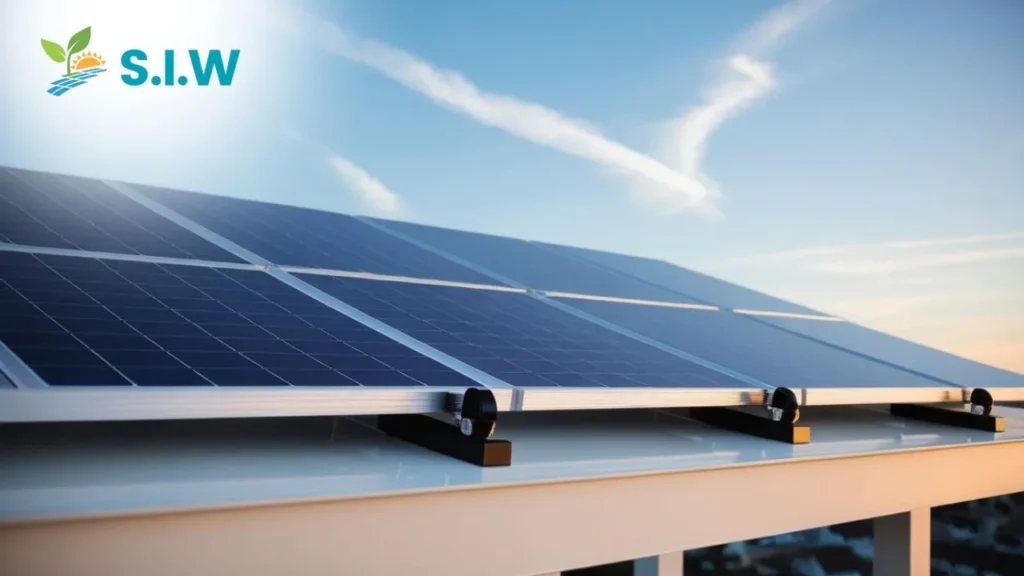Introduction to Solar Panel Rail Systems
In the rapidly growing solar energy market, the solar panel rail system stands out as a critical component of a successful solar installation. These systems serve as the backbone for mounting solar panels securely on roofs or other structures. By understanding the intricacies of solar panel rail systems, you can ensure optimal performance and durability for your solar energy setup.
What Is a Solar Panel Rail System?
A solar panel rail system is a framework designed to support and secure solar panels. It consists of rails, brackets, and mounting hardware that work together to hold the panels in place. This system ensures that the panels are positioned at the correct angle to capture maximum sunlight, which is crucial for the efficiency of your solar energy system.
Key Components of a Solar Panel Rail System
- Rails: These are long, horizontal pieces that form the primary structure for mounting solar panels. Rails are typically made from aluminum or stainless steel due to their lightweight and corrosion-resistant properties.
- End Clamps: These secure the panels at the ends of the rails, providing stability and preventing any movement.
- Mid Clamps: Positioned between the end clamps, mid clamps hold the panels in place along the length of the rail.
- Mounting Brackets: These attach the rails to the roof or another mounting surface. They must be robust and capable of withstanding various weather conditions.
- Flashings: Used in roof installations, flashings are essential for sealing the mounting brackets and preventing water infiltration.
Why Choose a Solar Panel Rail System?
Solar panel rail systems offer several advantages over alternative mounting options:
1. Durability and Strength
Solar panel rail systems are designed to withstand harsh weather conditions, including high winds, heavy snow, and intense heat. The use of high-quality materials like aluminum and stainless steel ensures that the system remains stable and reliable for many years.
2. Versatility
Rail systems can be adapted for various types of roofs, including flat, sloped, and metal roofs. This flexibility makes them suitable for a wide range of installations.
3. Easy Installation
Modern rail systems are designed for straightforward installation, which can reduce labor costs and installation time. The modular nature of the components allows for quick assembly and adjustment.
Types of Solar Panel Rail Systems
1. Flush Mount Systems
Flush mount systems are designed for installations on sloped roofs. The rails are mounted directly onto the roof structure, placing the panels very close to the surface. This type of system is ideal for areas with high wind speeds, as it minimizes the profile of the installation.
2. Ballasted Mount Systems
Ballasted mount systems are used for flat roofs and do not require penetrations into the roofing material. Instead, they rely on weights, such as concrete blocks, to secure the rails in place. This system is suitable for roofs where penetration is not feasible or desired.
3. Ground Mount Systems
For installations on open land, ground mount systems are used. These systems involve setting up the rails on posts or piers anchored into the ground. Ground mounts are often used when roof space is limited or when the installation requires optimal solar exposure.
Choosing the Right Solar Panel Rail System
Selecting the appropriate solar panel rail system involves considering several factors:
1. Roof Type and Structure
The type of roof you have will dictate the best rail system for your installation. Flat roofs may benefit from ballasted mounts, while sloped roofs require flush mounts. For non-roof installations, ground mounts are the preferred choice.
2. Solar Panel Specifications
Ensure that the rail system you choose is compatible with the size and type of solar panels you plan to install. Different panels have varying dimensions and solar mounting requirements, so compatibility is crucial.
3. Local Weather Conditions
Consider the typical weather conditions in your area. If you experience high winds, heavy snowfall, or other extreme weather, choose a rail system designed to handle these conditions.
4. Installation and Maintenance
Look for rail systems that offer easy installation and low maintenance. Systems with fewer moving parts and straightforward assembly can save time and reduce long-term costs.
Installation Tips for Solar Panel Rail Systems
1. Ensure Proper Alignment
Proper alignment of the rails is critical for the performance of your residential or commercial solar panels. Use a level to ensure that the rails are perfectly horizontal or angled as needed.
2. Secure Mounting Brackets
Mounting brackets must be securely fastened to the roof or ground to provide a stable foundation for the rails. Ensure that all fasteners are properly tightened and checked for integrity.
3. Use Quality Flashings
For roof installations, use high-quality flashings to seal the mounting points and prevent leaks. Proper sealing is essential to protect your roof and avoid water damage.
4. Regular Inspections
After installation, regularly inspect the rail system for signs of wear or damage. Address any issues promptly to maintain the integrity of the system.
Conclusion
A well-designed solar panel rail system is essential for the efficient and secure installation of solar panels. By choosing the right system and ensuring proper installation, you can enhance the performance and longevity of your solar energy setup. Whether you opt for a flush mount, ballasted mount, or ground mount system, careful consideration of your specific needs and conditions will lead to a successful solar installation.








